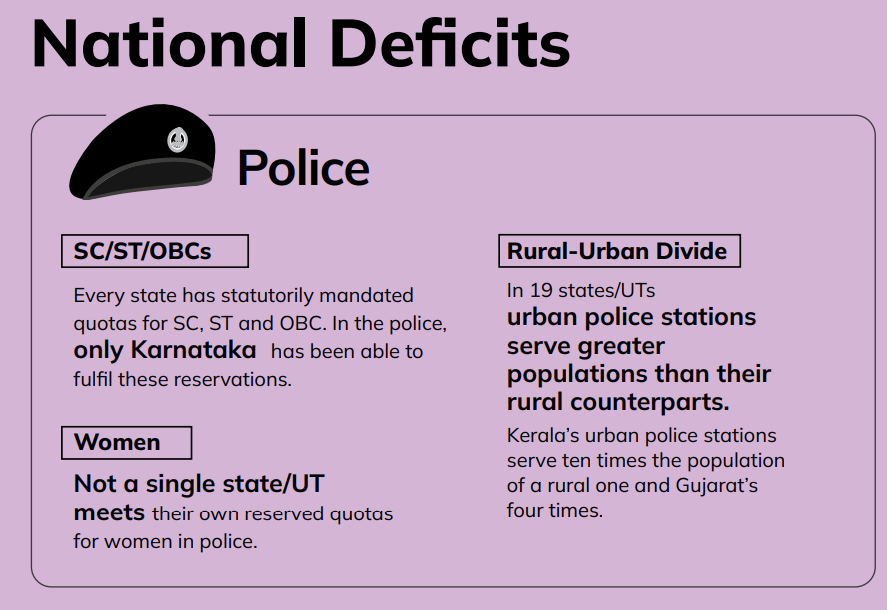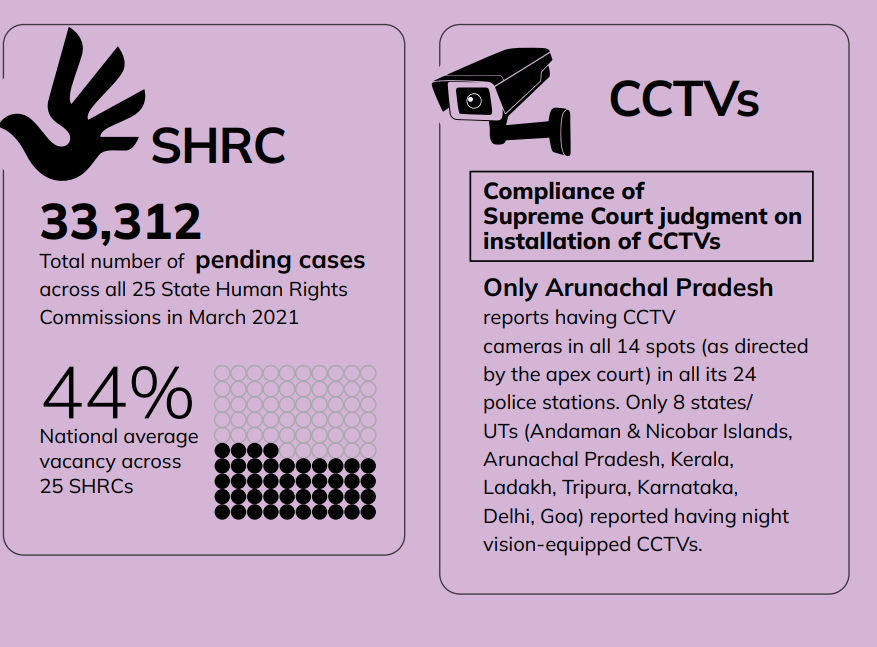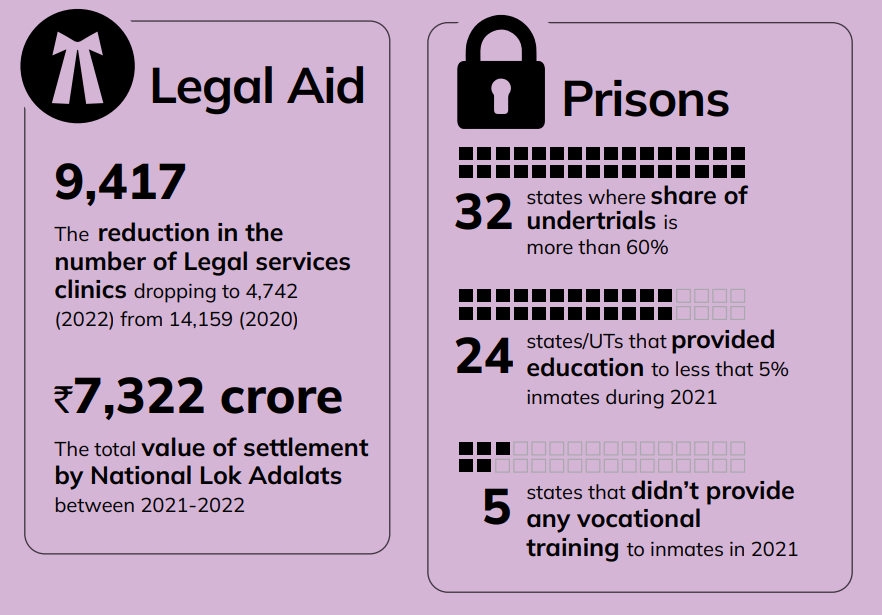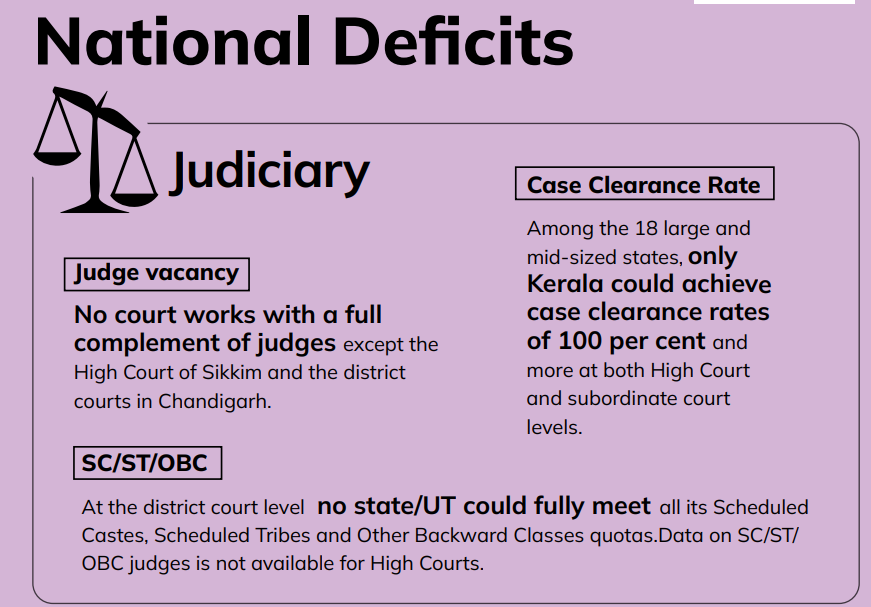Governance
India Justice Report 2022
- 06 Apr 2023
- 4 min read
For Prelims: Indian judiciary, Case clearance rates, High Courts and Lower Courts.
For Mains: India Justice Report 2022.
Why in News?
According to the India Justice Report (IJR) 2022, Karnataka has achieved the top rank among the 18 large and mid-sized states in delivery of justice with populations over one crore.
- Tamil Nadu has ranked in the second position; Telangana third; and Uttar Pradesh is at rank 18 which is the lowest.
What is IJR?
- The IJR is an initiative of Tata Trusts in collaboration with Centre for Social Justice, Common Cause and Commonwealth Human Rights Initiative among others.
- It was first published in 2019.
- It assesses the performance of states in terms of justice delivery, by considering several parameters such as police, judiciary, prisons, and legal aid to assess the overall performance of each state.
What are the Key Highlights of the Report related to Judiciary?
- Ranking of Justice Delivery:
- The list of 7 Small States with a population less than one crore each, was topped by Sikkim which was ranked second in 2020.
- Sikkim has been followed by Arunachal Pradesh and Tripura. The State of Goa is at rank Seven which is the lowest.
- Shortage of Judges:
- The Indian judiciary is facing a severe shortage of judges and infrastructure, leading to rising pendency, increasing caseloads, and declining case clearance rates (CCR) in lower courts.
- As of December 2022, the High Courts were functioning with only 778 judges against a sanctioned strength of 1,108 judges.
- The Indian judiciary is facing a severe shortage of judges and infrastructure, leading to rising pendency, increasing caseloads, and declining case clearance rates (CCR) in lower courts.
- Pendency:
- The number of cases pending per judge is rising in most states over the last five years, while the sanctioned strength has remained the same.
- The average pendency in High Courts is highest in Uttar Pradesh (11.34 years) and West Bengal (9.9 years), while it is lowest in Tripura (1 year), Sikkim (1.9 years), and Meghalaya (2.1 years).
- The number of cases pending per judge is rising in most states over the last five years, while the sanctioned strength has remained the same.
- Increased Caseload:
- The caseload per judge has steadily increased, with the caseload per judge increasing in 22 states and Union Territories between 2018 and 2022.
- Case Clearance Rate:
- The CCR in High Courts improved by six percentage points (88.5% to 94.6%) between 2018-19 and 2022 but declined by 3.6 points in lower courts (93% to 89.4%).
- High Courts are increasingly clearing more cases annually than subordinate courts.
- In 2018-19, only four High Courts had a CCR of 100% or more. In 2022, this more than double to 12 High Courts.
- Court Halls:
- Nationally, the number of court halls appears sufficient for the number of actual judges, but space will become a problem if all the sanctioned posts are filled.
- In August 2022, there were 21,014 court halls for the 24,631 sanctioned judges' posts, a shortfall of 14.7%.
- Recommendations:
- The shortage of judges and infrastructure is a significant concern for the Indian judiciary, leading to a rise in pendency and declining CCR in lower courts. The government needs to address this issue by filling the vacant judge posts, providing adequate infrastructure, and taking measures to improve the efficiency of the judicial system.
- There is a need for better police training and infrastructure, reducing overcrowding in prisons, and improving the speed and efficiency of the judicial system.
- There should be greater attention to be paid to the needs of victims of crime, including improving access to legal aid and victim compensation schemes.
- By addressing these challenges, India can move closer to achieving a more equitable and effective criminal justice system.
What are Other Findings?
 |
|
 |
 |





